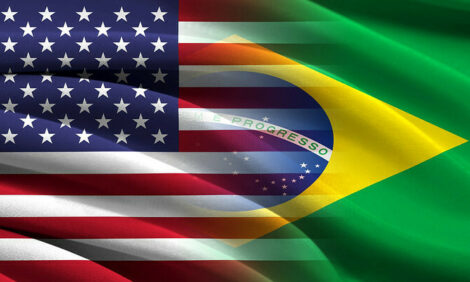



Study Sees Anxiety in the Whites of a Cows Eye
US - Cows are known for their big, beautiful dark eyes. But University of Guelph researchers have discovered it's actually the whites of their eyes that are important when it comes to determining their temperament.Their study, published in the recent online issue of the Journal of Animal Science, found that the higher the proportion of visible white in a cow's eye, the more anxious the animal.
"Cows whose eyes were about 50-per-cent white were very anxious," said Sarah Core, a master's student who worked on the study with Guelph animal and poultry science professors Steve Miller, Tina Widowski and Georgia Mason. “The more passive cows had about 20-per-cent visible white in their eyes.”
Anxious cattle can be dangerous and frustrating to handle and can also reduce profits and productivity because they tend to have lower weight gain and poorer meat quality, said Core. They’re also more likely to injure themselves or other cattle. As a result, identifying well-mannered cows is important when it comes to breeding.
“With growing consumer demands for higher-quality products and animal welfare, selection for docility in cattle and other behavioural traits is beginning to play a key role in increasing profits throughout the beef industry,” she said.
The study included 140 beef cattle. Researchers had the cattle enter a chute where their head was restrained. They then collected video images of each cow’s response and compared it with the amount of white visible in their eyes.
“There was a significant positive correlation,” said Core. “The cows with a large proportion of white in their eyes would respond by jumping and thrashing around, and the cows with a smaller proportion of white in their eyes would just stand there.”
With the same group of cattle, the researchers also studied how the animals responded to being segregated from the herd. Those that were more anxious would panic and immediately try to rejoin the herd, whereas those that were more passive would remain still. The findings of this second study also showed a correlation between the proportion of white in the animals’ eyes and anxious behaviour.
Breeders currently evaluate a cow’s temperament by scoring its flight speeds and anxiety levels when put in stressful situations.
“Calm cattle that are easy to handle are highly desirable,” said Miller, “but an objective measure that can be quantified and measured routinely in cattle breeding operations is not common. The use of eye-white percentage is showing very good promise of helping us select for calmer, more productive cattle.”
The next step in this research is to determine the heritability of eye white among cattle, said Core. “More research needs to be done on how this trait is transferred down the lines. For example, if you have two parents with a small amount of white in their eyes, what are the chances that will be passed on to their progeny?”
| TheCattleSite News Desk | Read more EBLEX News here |


